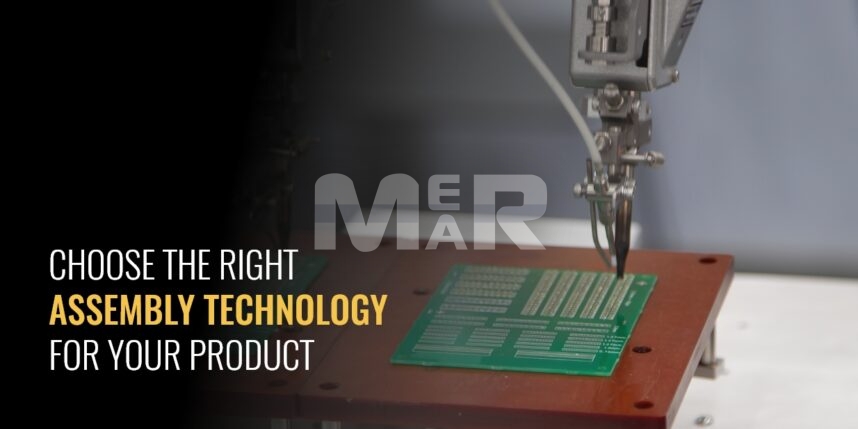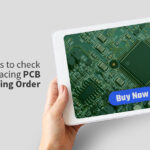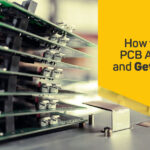How to choose the right PCB Assembly Technology for your Product?

If you are making a choice of the right PCB assembly technology for your product, there are many areas to consider.
The first and possibly most important aspect is the increasing miniaturization of electronic products. Clearly, you need flexible circuit boards that can save room and support high-density mounting design. FPC can therefore greatly reduce the size and weight of electronic products. Little surprise then that FPC has found wide acceptance in industries such as aerospace, military, laptops and computers, digital cameras and other such fields. The fact that flexible PCBs can also be moved and bent as per the layout requirements without any damage to the conductor, makes it a popular choice. Additionally, FPC comes with the advantages of heat dissipation and solderability, which makes its use ubiquitous.
Here is a quick overview of the many advantages offered by Flexible circuit boards that make it a must-use for your products:
- Low space requirements
- Reduced weight
- Flexibility that makes installation easy
- Improved reliability
- Ability to eliminate conductors
- Offers high-speed circuitry
- Improved aesthetics
- Reduced assembly costs
Flexible boards, in turn have different structures as below:
Single-side boards – The advantage of these boards is to do with their simple fabrication and its non-complex structure.
Double-side boards – These boards come with a complex structure, which needs to be taken care of during design and assembly.
Multi-layer boards – These variants have a lot more complexity that needs a lot of attention to ensure that the functioning is flawless.
In making the choice of flexible PCBs, it will be of interest to also know the assembly technology of flexible boards.
Here is an overview of the techniques used in the manufacturing process and the technology involved:
Choosing the Right Material for a Flex PCB!
The first step to being taken in assembling the flexible PCB is to do with the choice of the right material. This refers not just to the right substrate material, but also the choice of a suitable conductor and adhesive among other things.
The primary material choice takes into account its insulating properties as well as its electrical and mechanical performance. Polyimide or polyester is often preferred. While polyester is preferred for its low solderability, polyimide is known for its tensile strength and elongation. Also, the dielectric loss is far lower in polyimide as opposed to polyester. While polyester offers the advantage of low costs, it is vulnerable to damage during soldering.
Blanking and Drilling
The process begins with blanking, which simply refers to the identification and preparation of materials for the assembly process. The drilling process of course needs to be undertaken with utmost care as you are dealing with thin material. It is recommended that the boards be stacked first rather than using a single piece.
Desmear and Pitting
After the drilling process, you are likely to have some residue remaining. It is imperative that the residue and dirt be removed, through the process of desmearing. The next process is to do with plated-through-hole and pattern plating. This largely involves the following:
Electroless Plating – This involves choosing a pre-treatment solution. Generally, Acidic colloid palladium is preferred.
Electrical Plating – The objective of this process is to thicken the panel as that will be crucial for proper hole wall coating in the latter part of the process.
Imaging – Before you get to this stage, it is imperative to use electrolytic and chemical cleaning for flexible boards. Post this, sticking a dry film and allowing it to develop is the next vital step.
Etching
During the etching phase, it is important to focus on maintaining the etching solution direction as well as the position, pressure and direction of transmission. What needs to be achieved in that the rigid substrate is attached to the flexible one.
After the etching phase, the surface needs to be treated to ensure that its binding potential is strengthened. The next task is to position the cladding layer. In doing so, some of the important things to remember are that in baking the flexible board and the cladding layer in the oven, the stack-up height should not be more than 25 mm.
Lamination
At the lamination stage, it is important to choose the process basis the choice of substrates made. Factors such as the time required for lamination, the pressure and heating rate are all a function of the material. You need to ensure that the temperature reaches 173C between 10 to 20 minutes. Similarly, the pressure of 150-300N/cm2 should be applied within five to eight seconds.
The ultimate steps of the flexible PCB assembly process involve the following:
- Baking
- Hot melting
- Sharp processing
- Packaging
As the above processes show, manufacturing of Flexible PCB requires a whole lot of professional expertise in ensuring reliability of the PCB, which in turn determines the reliability of the product. Be sure to choose your PCB manufacturer with care. An experienced PCB manufacturer will be sure to use industry best practices and his experience in creating flexible PCB, which will ensure product trustworthiness.
To know more about our quality PCB Assembly Service offerings, please feel free to reach out to us. Our engineers will study your bespoke requirements and will get back with viable solutions. We pride ourselves in not just meeting but exceeding customer requirements, whether those are simple PCB boards, flexible PCB Assembly or highly complex multilayered boards. Irrespective of whether you are looking for a quick prototype or want us to fabricate mass solutions, we are a reliable one-stop-shop. We are recognized as a trusted South California contract manufacturing and PCB Assembly and Fabrication Company.
Know More About PCB Assembly Service.
Send Inquiry to Get a Free Custom PCB Assembly Quote.








